Akasa Turing Fanless Case Review: Unrivalled Noiseless NUC
by Ganesh T S on October 26, 2020 8:00 AM ESTPower Consumption and Thermal Performance
The power consumption at the wall was measured with a 4K display being driven through the HDMI port. In the graphs below, we compare the idle and load power of the Intel NUC8i5BEK (Standard Kit) and the NUC8i5BEB (Akasa Turing) with other low power PCs evaluated before. For load power consumption, we ran the AIDA64 System Stability Test with various stress components, and noted the maximum sustained power consumption at the wall.
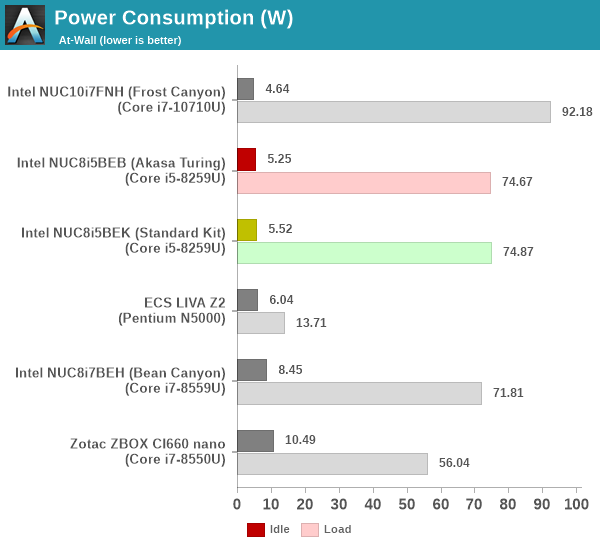
As expected, the peak and idle power consumption numbers for both configurations are in the same ballpark. The minor drop for the Turing configuration can be attributed to the absence of the cooling fan.
Our thermal stress routine starts with the system at idle, followed by four stages of different system loading profiles using the AIDA64 System Stability Test (each of 30 minutes duration). In the first stage, we stress the CPU, caches and RAM. In the second stage, we add the GPU to the above list. In the third stage, we stress the GPU standalone. In the final stage, we stress all the system components (including the disks). Beyond this, we leave the unit idle in order to determine how quickly the various temperatures in the system can come back to normal idling range. The various clocks, temperatures and power consumption numbers for the system during the above routine are presented in the graphs below. The interesting comparison here is between the behavior of the standard kit and the Turing configuration.
| Intel NUC8i5BEK (Standard Kit) System Loading with the AIDA64 System Stability Test | |||
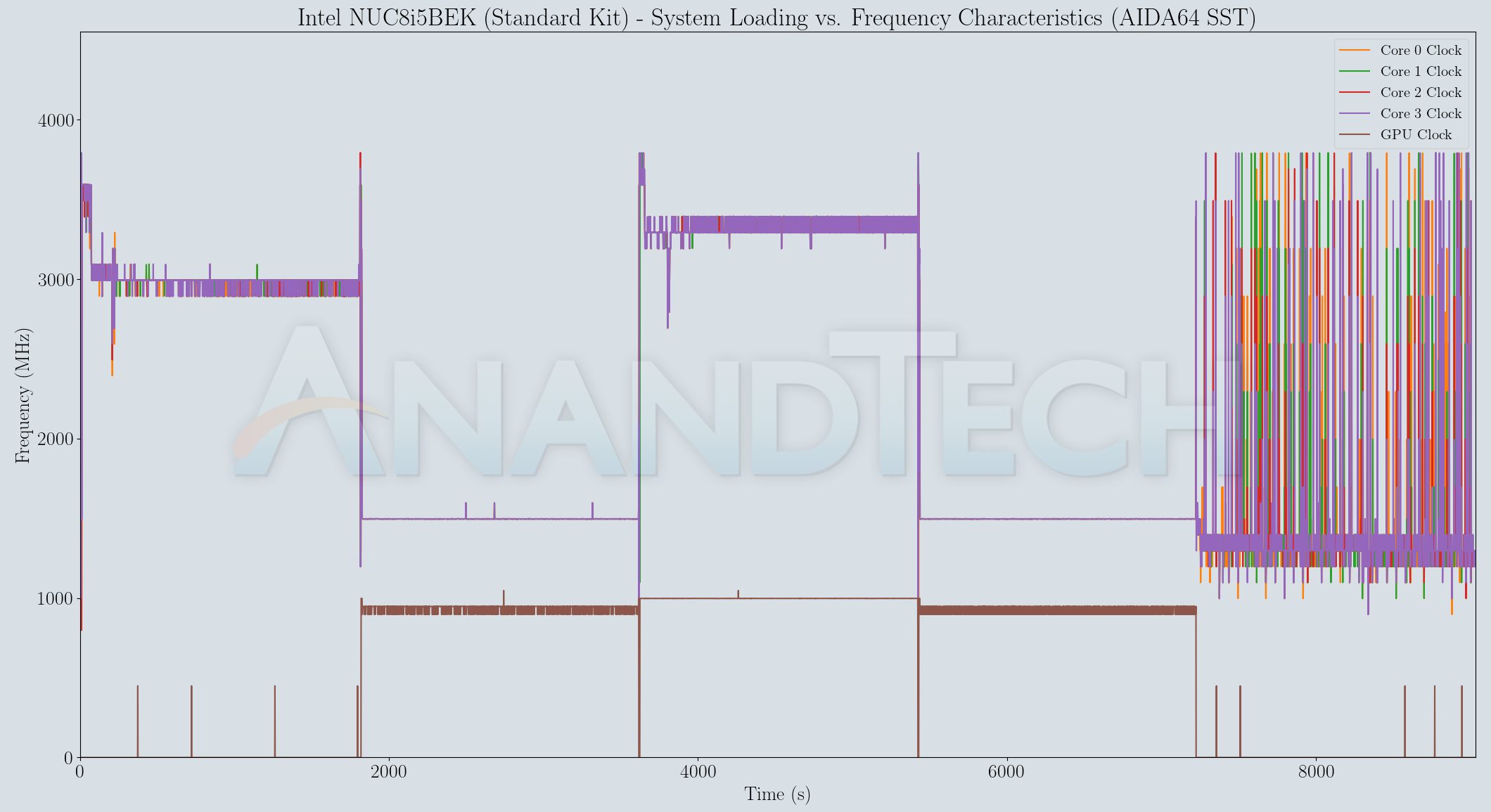
| Intel NUC8i5BEB (Akasa Turing) System Loading with the AIDA64 System Stability Test | |||
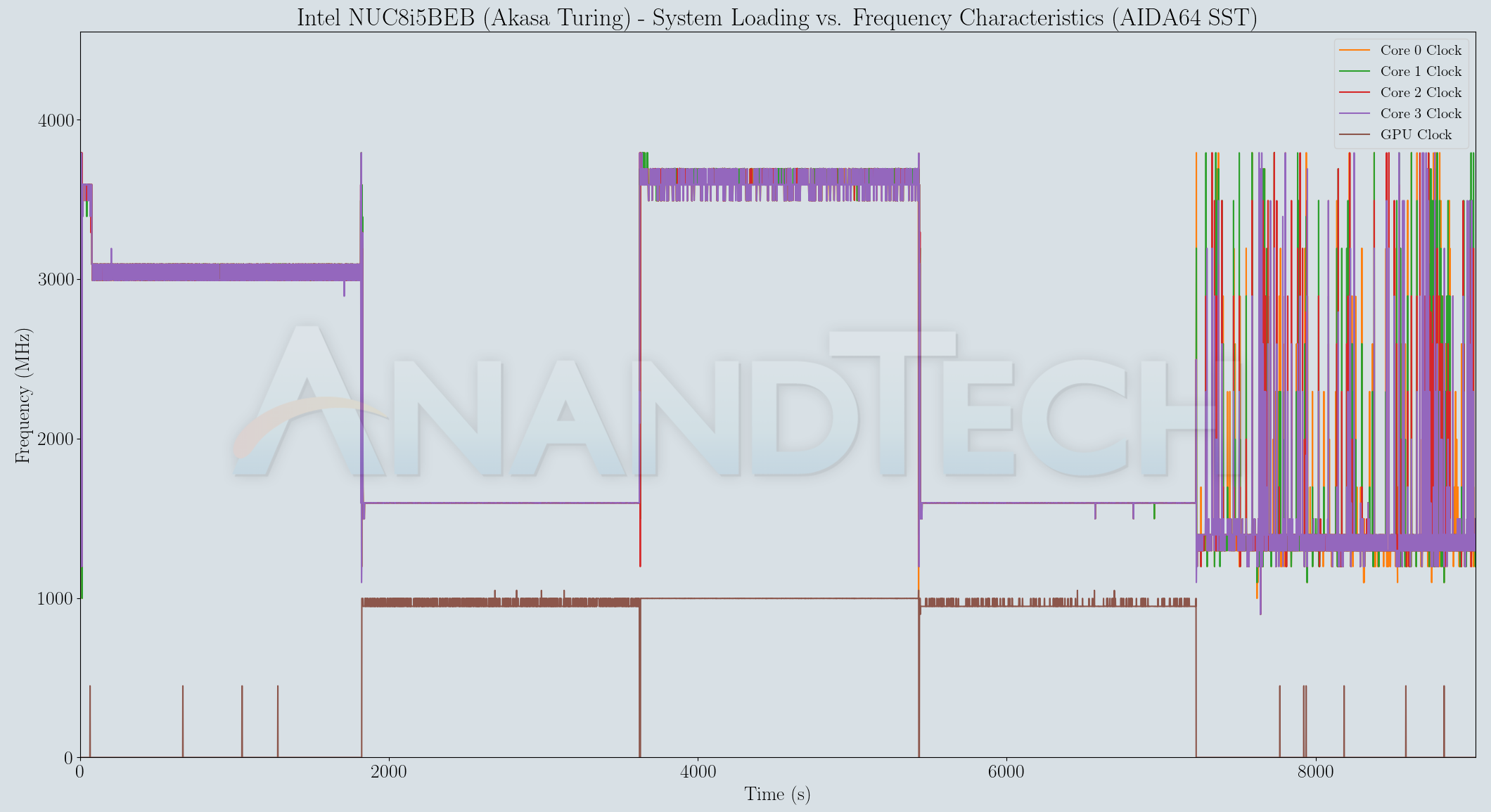
The Turing configuration is able to maintain slightly higher core clock frequencies during the actual workloads compared to the actively cooled kit. The temperatures present a clear reason - while the actively cooled version settles down around 90C during the first phase, it is around 80C for the Turing configuration. The drawback for the Turing build is with the disk stress - the presence of a thermal pad on top of the M.2 SSD in the standard kit enables the SSD temperature to stay well south of 60C. However, the Turing configuration lets the SSD go up to 80C (at which point the SSD probably starts throttling). The other aspect to note is the rate of drop in temperature after the load is removed - the actively cooled configuration goes below 40C quite quickly. In the same duration, the fanless version is still above 40C despite not reaching as high a temperature as the actively cooled configuration. The power numbers show that the package power with this particular BIOS configuration is capped at 30W outside the boost zone. We do see the actively cooled version stay in the boost zone longer than the fanless version - which probably explains why many of the benchmarks showed the standard kit with a slight edge.
| Intel NUC8i5BEK (Standard Kit) System Loading with Prime95 and Furmark | |||
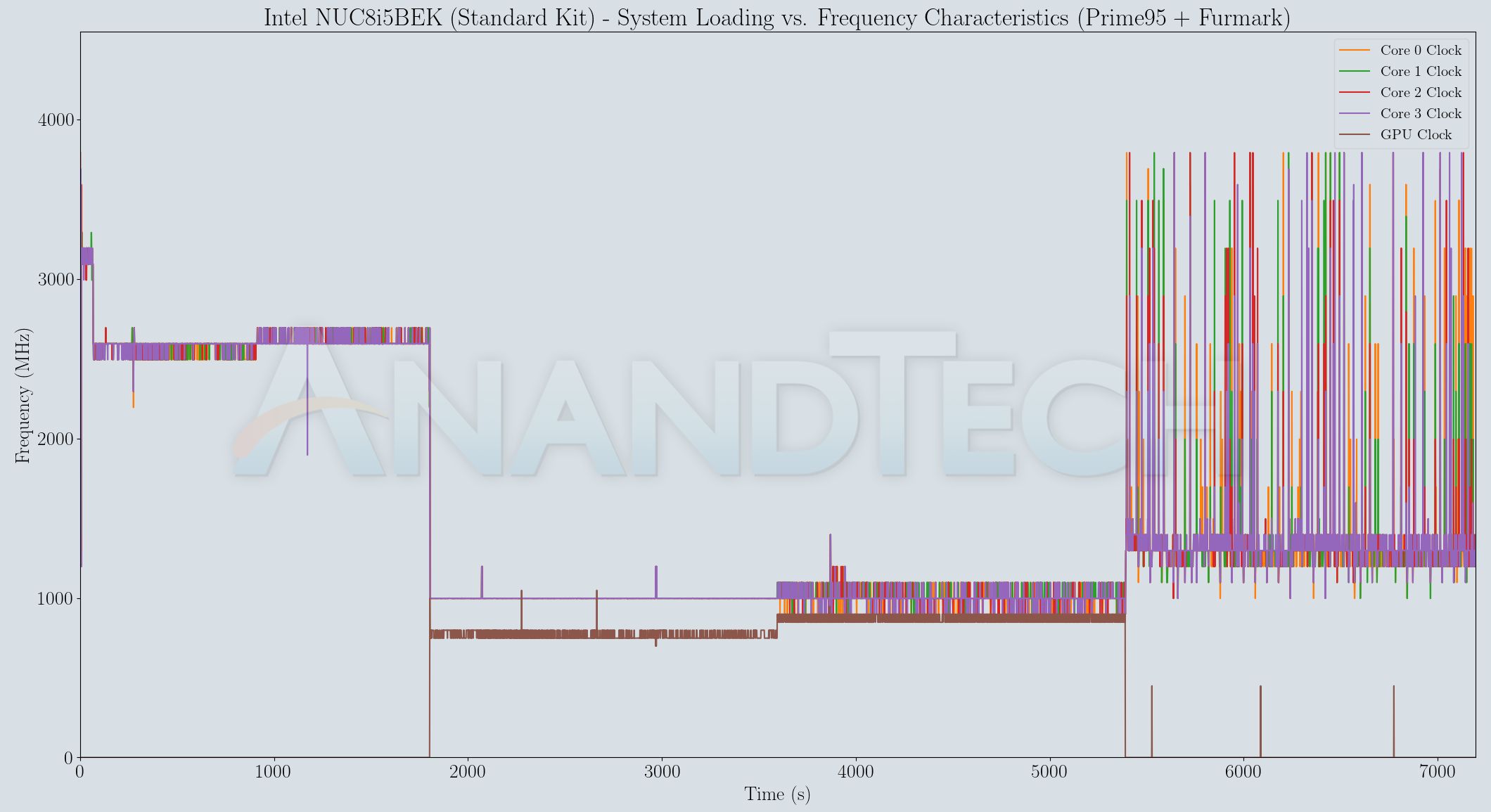
| Intel NUC8i5BEB (Akasa Turing) System Loading with Prime95 and Furmark | |||
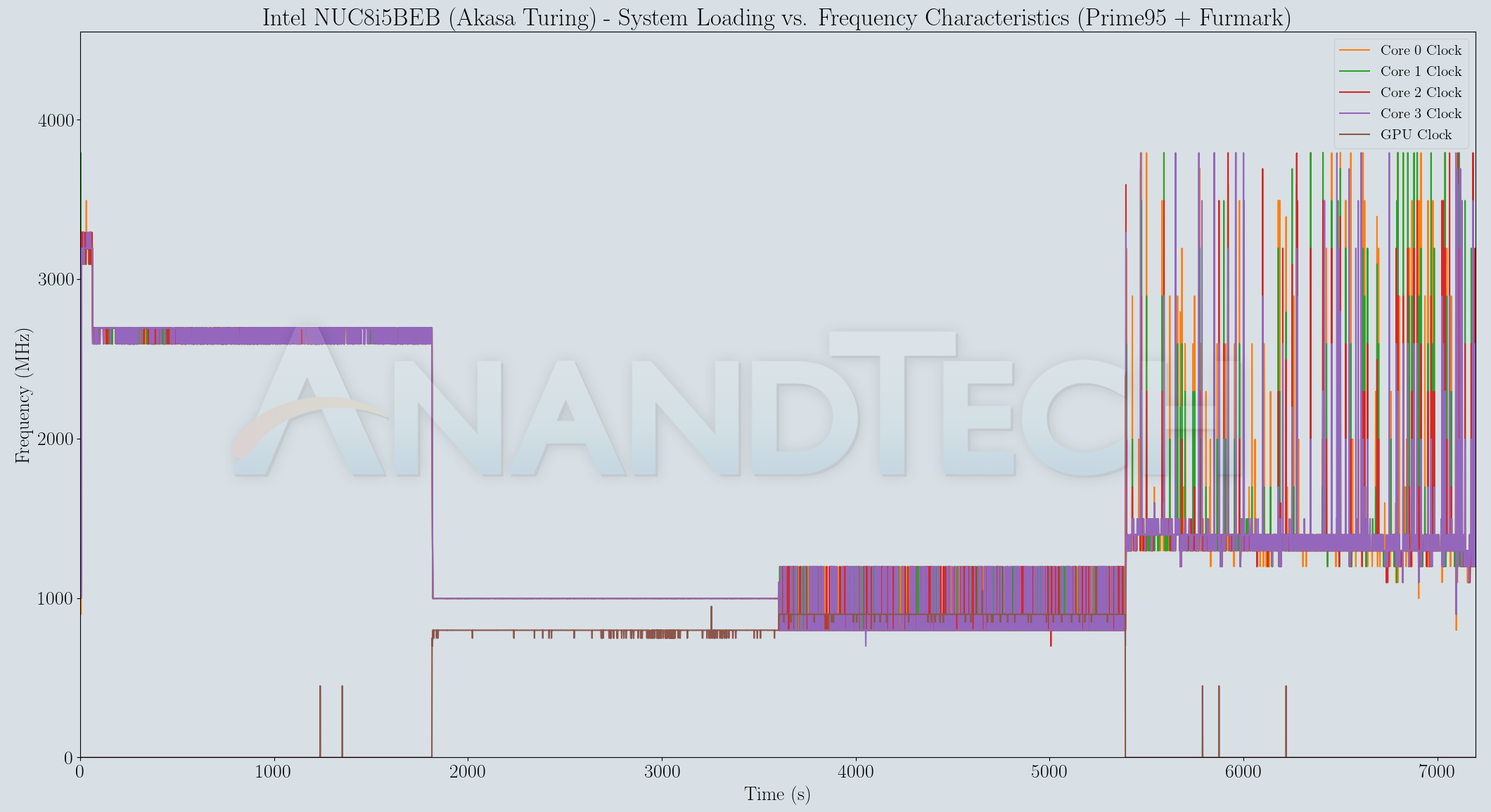
In the Prime95 case, the fanless version maintains steady frequency after the boost period, while the standard kit shows more variance around the same numbers. Once Furmark enters the picture, both the active and passive versions show similar frequency profiles for the components. The temperatures recorded during the process show the fanless version coming in at a full 10C below the actively cooled version. The larger heat sink / aluminum mass helps prevent thermal runaway of the sort happening in the standard kit (before the fan kicks in with full power to begin the cool-down). Power numbers again show slightly higher spikes in the boost zones for the standard kit.
The above results confirm the efficacy of the Akasa Turing to keep the system running at its maximum rated package power consumption numbers without thermal runaway. However, the exterior temperature may also be of concern in situations where the system is kept within touching distance. We recorded some thermal photographs of the unit using a FLIR ONE Pro camera towards the end of each of the stress test components.
The maximum observed temperature was 66.8C deep towards the base of the heat sink fins and out of touch.
The gallery above presents more thermal photos, showing that the segments of the chassis within touching distance reach around 57C under these artificially-stressful testing conditions.


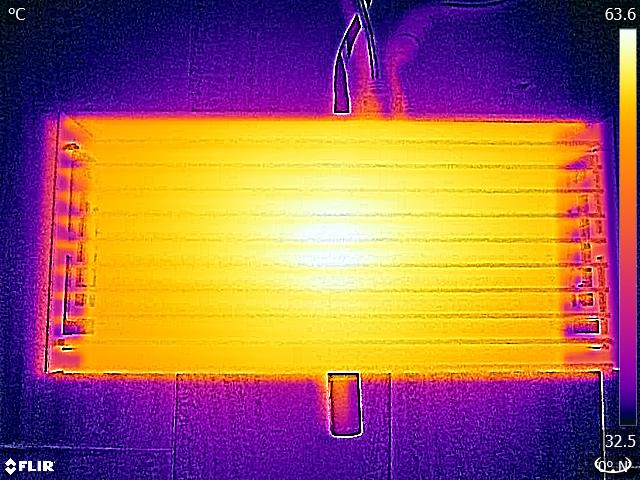
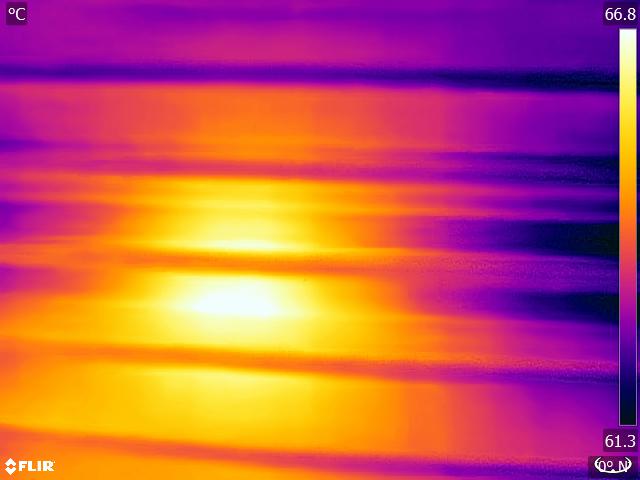














28 Comments
View All Comments
Oxford Guy - Monday, October 26, 2020 - link
Fanless, not fabless. Apple’s ‘auto-defect’ at its finest.eastcoast_pete - Monday, October 26, 2020 - link
Google's Gboard is no slouch at those, either. Smart keyboards can be so dumb sometimes (:Spunjji - Wednesday, October 28, 2020 - link
You should check out monsterlabo - they'd had fanless CPU+GPU options available commercially for a while now, and The Beast looks like it will provide as much cooling as anyone could reasonably need.BushLin - Monday, October 26, 2020 - link
Every Akasa cooling product I've encountered has performed worse than stock so kudos to them for not stinking the place out with this particular product.Flunk - Tuesday, October 27, 2020 - link
Considering it's an entirely custom, fanless cooled case for a NUC. This thing is surprisingly affordable. There are a lot of commercial and industrial applications for a case like this.asfletch - Tuesday, October 27, 2020 - link
Good to see fanless tech getting some attention. I'm one of those fussy tinnitus sufferers, and the silent PC I just built for myself is making me very happy.However, my case (Streacom FC8a) is also 2.7kg net, yet it is coping fine with a 65w Core i5, even in high Australian ambient temps. Same weight and seemingly awkward form factor for the Akasa makes me appreciate mine even more.
Spunjji - Wednesday, October 28, 2020 - link
Those Streacom cases are excellent. One day I'd like to build an APU-based system in the DB4, maybe once AMD get around to sliding RDNA 2 into a DDR5-based system.asfletch - Wednesday, October 28, 2020 - link
Yeah I was keen to use Ryzen 4650G but couldn't find one in my neck of the woods. Maybe next upgrade in a few years when the integrated graphics are even more impressive.